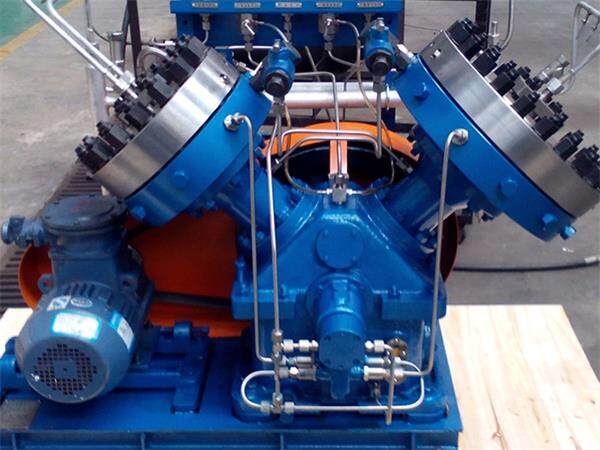Diaphragm compressors are widely used in industries such as chemical and energy due to their good sealing performance, high compression ratio, and non pollution of the reduced material. The customer lacks mastery in the maintenance and repair of this type of machine. Below, Xuzhou Huayan Gas Equipment Co., Ltd. will provide some insights on the simple troubleshooting of compensation oil pumps.
The compensation oil pump is the heart of the entire oil passage system of the diaphragm compressor, and its function is to continuously transport the gear oil required to generate steam pressure. If it is abnormal, it will cause all oil passage systems to be paralyzed. The main faults are:
1) Compensation oil pump plunger stuck
Compensation oil pump is a plunger pump with a small clearance between the plunger rod and sleeve. If the gear oil is used for a long time or the filter screen is damaged, dirt in the gear oil will enter the pump casing, causing the plunger to jam. At this point, it is necessary to clean the compensation oil pump to ensure that the plunger moves freely.
2) The filter screen of the compensation oil pump is blocked
Clean the filter screen
3) The oil discharge valve ball is stuck or the seal is damaged
Clean the inlet and outlet valves to ensure that the ball moves freely and conduct a gasoline leak test. There should be no water leakage within one minute.
Diaphragm compressor is a special type of displacement compressor with high compression ratio, good sealing performance, and the ability to reduce gas pollution from lubricating grease and other solid residues. Therefore, the manufacturer of the diaphragm compressor stated that it is suitable for reducing gases such as high purity, rare and precious, flammable and explosive, toxic and harmful, corrosive and high pressure.
Diaphragm compressors are composed of a crankcase, crankshaft, main and auxiliary connecting rods, as well as primary and secondary cylinders arranged in a V-shape, and connecting conveying pipes. Powered by an electric motor and rotating the crankshaft according to the triangular belt, the main and auxiliary connecting rods drive the pistons of the two oil cylinders to move repeatedly, causing the oil cylinder to push the valve plate back and forth to vibrate and absorb and exhaust gas. Operated by the inlet and outlet valves of the first stage cylinder, the low-pressure gas is sent to the inlet and outlet valves of the second stage cylinder for operation, reducing it to high-pressure gas discharge.
Post time: Aug-22-2023


